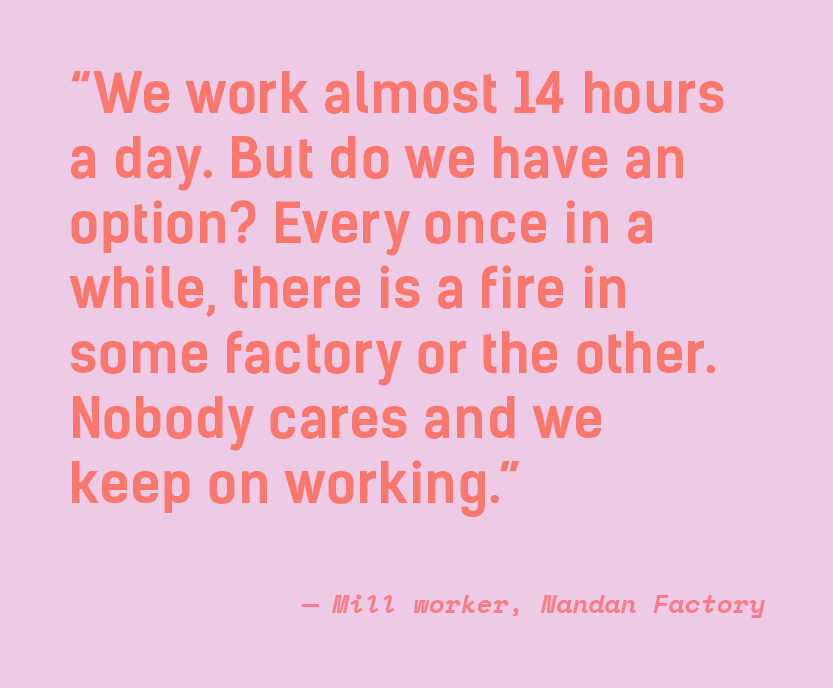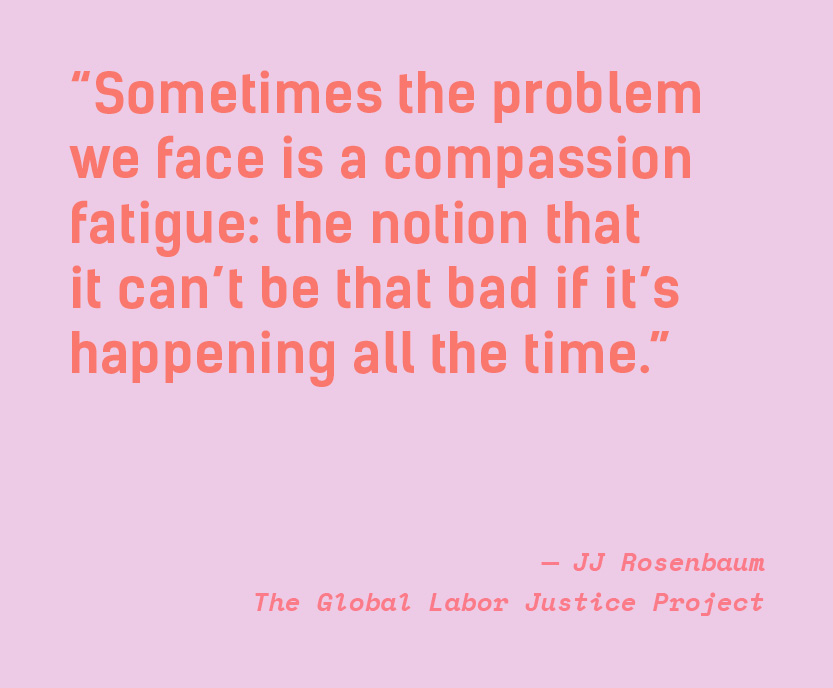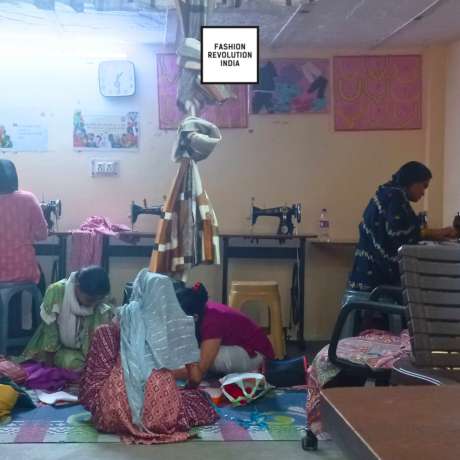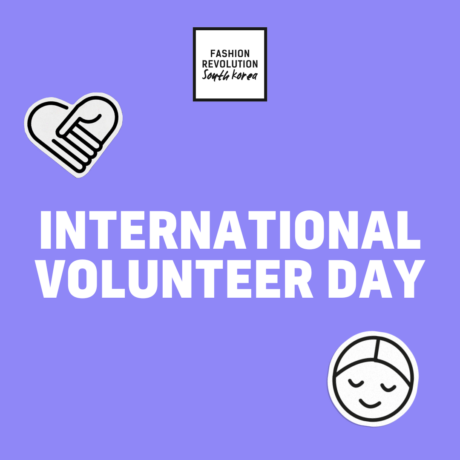The human cost of our garments
Exactly one year ago, a massive fire at Nandan Denim factory in Ahmedabad, India claimed the lives of seven factory workers, once again highlighting the miserable, and often inhumane, working conditions in many garment factories.
Ahmedabad is a fast-growing city in the western state of Gujarat, India. The city’s outskirts have been exponentially growing as a garment manufacturing hub for various multinational brands across the globe. The Day of 8 February 2020 started like any other day for the garment workers at the Nandan Denim factory. No one could have predicted the horror that would unfold later that evening. A massive fire started in the shirting department of the factory and blazed through the two-story factory in the evening. At the time, more than 60 workers were present on the floor with only a single entry and exit door. The lone door could only be reached by climbing a steep ladder, making the escape incredibly difficult. The fire quickly engulfed the factory as it was full of highly flammable denim, fabric and textile dust. As smoke billowed through the windows, the workers’ cries for help could be heard while they struggled to get out. It took almost 22 hours to douse the fire with the tragedy ultimately killing seven workers, ranging in age from 22 to 47.
Grieving families of the victims had to wait for a week to identify the evacuated bodies which were charred beyond recognition. A devastated man who lost his nephew in the blaze said “We can’t even mourn our dead because we don’t know which one is ours,” After the fire, police investigation revealed that the factory had violated multiple safety regulations. A simple visual inspection showed absence of ventilation and safety measures such as fire escapes or even basic emergency apparatus. The single entry and exit door, only accessible through a ladder, further sealed the fate of the workers.

Nandan Denim claims to be India’s largest and world’s fourth-largest denim fabric maker, manufacturing denim fabric, shirting fabric and yarn for some of the biggest brands in the world. Its factory workers, mainly women, earn about 35 cents per hour, often working for 14-hours per day in unsafe conditions. Survivors told reporters that to meet the unrealistic client demand they are forced to stitch more than 400 garment pieces a day, often skipping meal and toilet breaks. One worker said “We work almost 14 hours a day. But do we have an option? Every once in a while, there is a fire in some factory or the other. Nobody cares and we keep on working.” In fact, workers continued to work even after the fire had started as there was no adequate alarm system to start the evacuation process. How the mandatory audits failed to detect such large scale violation of minimum safety requirements can be attributed to a corrupt system which exploits the most deprived and poverty-stricken faction of our society. The workers are often migrant labourers, sub-contracted to small contractors. They live and work in unimaginably miserable conditions because for most of them this is the only means of survival. They rarely have any voice or identity and are immediately dismissed upon expressing any grievance.
In light of these revelations, perhaps I should retract my previous statement. Given the clear human exploitation, gross negligence of regulations and complete disregard for human life, all fueled by the fashion industry’s insatiable demand for speed and cheapness, maybe such incidents should have been predicted and even expected.
The fact is this wasn’t the first or the last fatal fire incident in garment factories, let alone Nandan Denim factory. After the February fire, the factory was closed by local safety and health authorities and its licenses were suspended. Nandan Denim agreed to pay $14,000 to the next of kin of the victims and also provide a job to one of their family members. Merely six months later, another major fire was reported at a production unit in the premises of Nandan Denim. Fortunately, this time there were no fatalities. This is the continuation of the same toxic cycle – the media limelight eventually recede, the “situation” is handled, the activists mollified and virtually no credible action taken beyond the public relations exercise and paying off the legal fines – until something similar happens again.
Interestingly, although Nandan Denim claims to be the supplier to major international retailers on its website, most of the brands distanced themselves after the incident and declared to have no relationship with them – which brings us to the crux of the issue. The lack of accountability from the brands for whom these garments are ultimately being manufactured. This can be attributed to the multi-tiered and complicated nature of garment supply chains because of which it is a near impossible task to trace a specific item to one factory. Typically, the factory that sews the garments and ships them for distribution is the tier closest to clothing brands. Below these are fabric manufacturers such as Nandan Denim. As we move further down the supply chain, fabric suppliers, such as spinning mills, are some of the least transparent. This makes it easy and convenient for brands to shrug off the responsibility of these incidents.
To bring about long-lasting and meaningful change, brands must acknowledge and take ownership of their entire supply chain. They hold the most power and cannot abdicate responsibility for malpractice at any level of the value chain. After all, every single worker toiling at different tiers contributes to the creation of the garment they sell and profit off millions of dollars under their name.
Sadly, it is evident from past incidents that brands are highly unlikely to act of their own accord unless their reputations are at stake. For instance, it was only after the Rana Plaza tragedy in 2013, that apparel companies signed the legally binding agreement on health and building code inspection called the Accord on Fire and Building Safety in Bangladesh. The results were gradual but labour advocates say it has brought about a physical transformation in Bangladesh factories. However, the change has not been seen throughout the garment industry and the code of conduct focuses only on implementing measures which can be seen and audited.
 Work rights advocates, JJ Rosenbaum, of the Global Labor Justice Project said “Sometimes the problem we face is a compassion fatigue: the notion that it can’t be that bad if it’s happening all the time,” The Nandan factory incident is just one of the many examples of egregious violations in safety standards leading to loss of human lives in garment factories. Fire accidents have become such a regular and repeated phenomenon in the garment supply chain that they are simply accepted as part and parcel of the business. Fires caused by faulty electronics, boiler explosions or illegal conversion of buildings ill-equipped for industrial use are a common occurrence in garment factories globally. These lone incidents can be forgotten but lives lost cannot be replaced.
Work rights advocates, JJ Rosenbaum, of the Global Labor Justice Project said “Sometimes the problem we face is a compassion fatigue: the notion that it can’t be that bad if it’s happening all the time,” The Nandan factory incident is just one of the many examples of egregious violations in safety standards leading to loss of human lives in garment factories. Fire accidents have become such a regular and repeated phenomenon in the garment supply chain that they are simply accepted as part and parcel of the business. Fires caused by faulty electronics, boiler explosions or illegal conversion of buildings ill-equipped for industrial use are a common occurrence in garment factories globally. These lone incidents can be forgotten but lives lost cannot be replaced.
As consumers, we can hold global brands accountable to create greater transparency of the regulatory mechanisms and adherence to international and local human rights and safety laws. In Fashion Revolution’s latest Consumer Survey, 74% of people agreed that fashion brands should publish which factories they use to manufacture their clothes and 73% said they should publish their fabric suppliers. Now we need demand that industry put this sentiment into action. First, we must call on these brands to disclose their suppliers at every level of the value chain, from sewing and garment making facilities to raw materials suppliers. Then, we must demand that brands create policies and purchasing practices which enable all of their suppliers to ensure every worker is safe from harm. The guidelines and codes of conduct, such as the Accord on Fire and Building Safety in Bangladesh, should not exclusively focus on physical infrastructure. They need to rectify issues that affect the long-term well-being of workers such as long working hours, physical and bodily exhaustion, intense work rhythms, harassment, and the lack of any meaningful representation. They have to coordinate and work with labour unions to actively monitor and resolve issues that go beyond refurbishing buildings and fulfilling the audit criteria and ensure basic human rights for workers.
Ultimately, we need a collective shift in mindset which recognises workers as human beings deserving of leading a life with dignity, safety and security – basic rights that most of us are privileged with and take for granted. No human should have to risk their health and safety to earn an honest living. Essentially the workers are paying the price with their health and all too often their lives, only to save brands a few cents on a pair of jeans. As we mark the anniversary of this tragedy, we must ask ourselves, after all the societal progress and development of the 20th century, have we degraded human life to be worthy of just a few cents?








